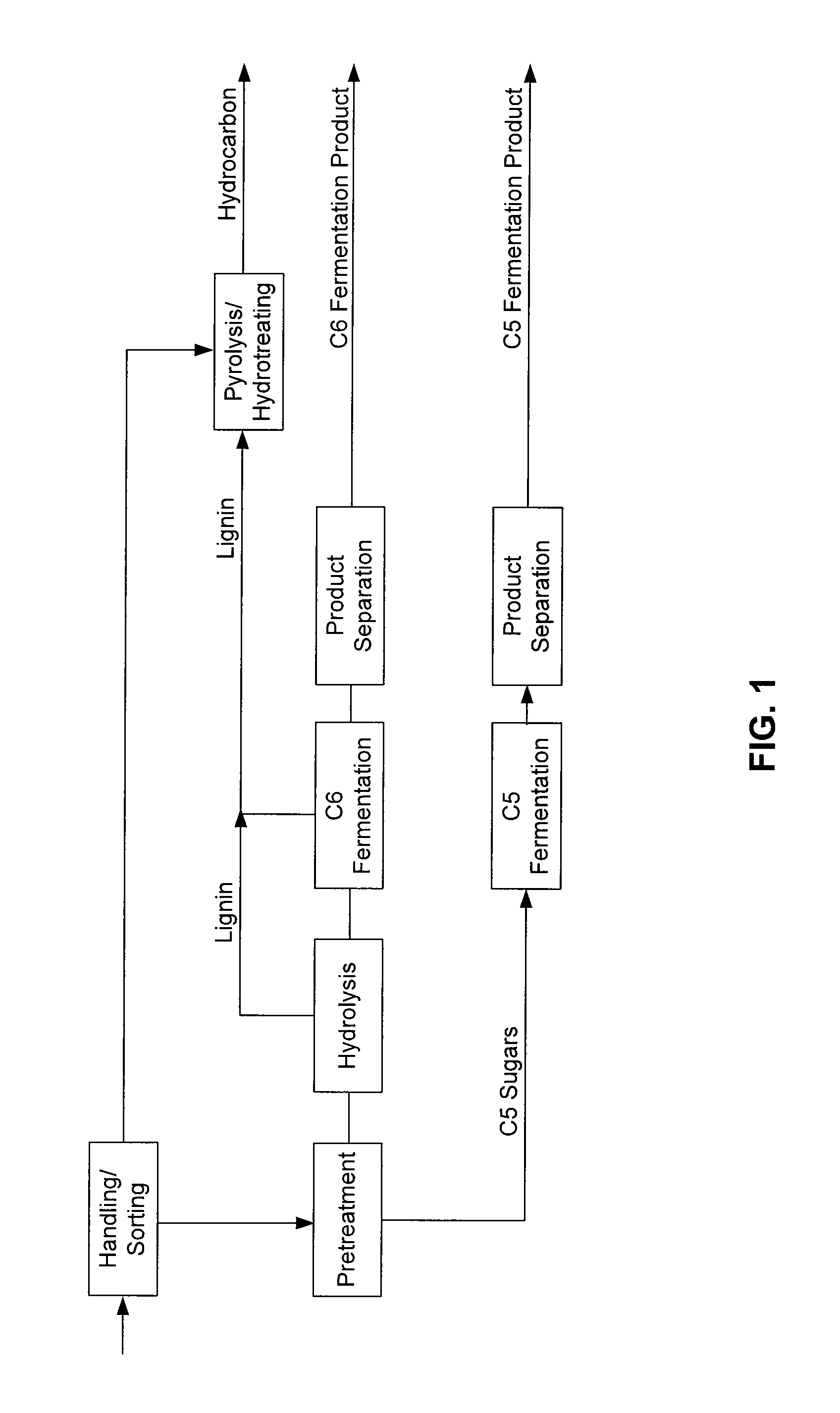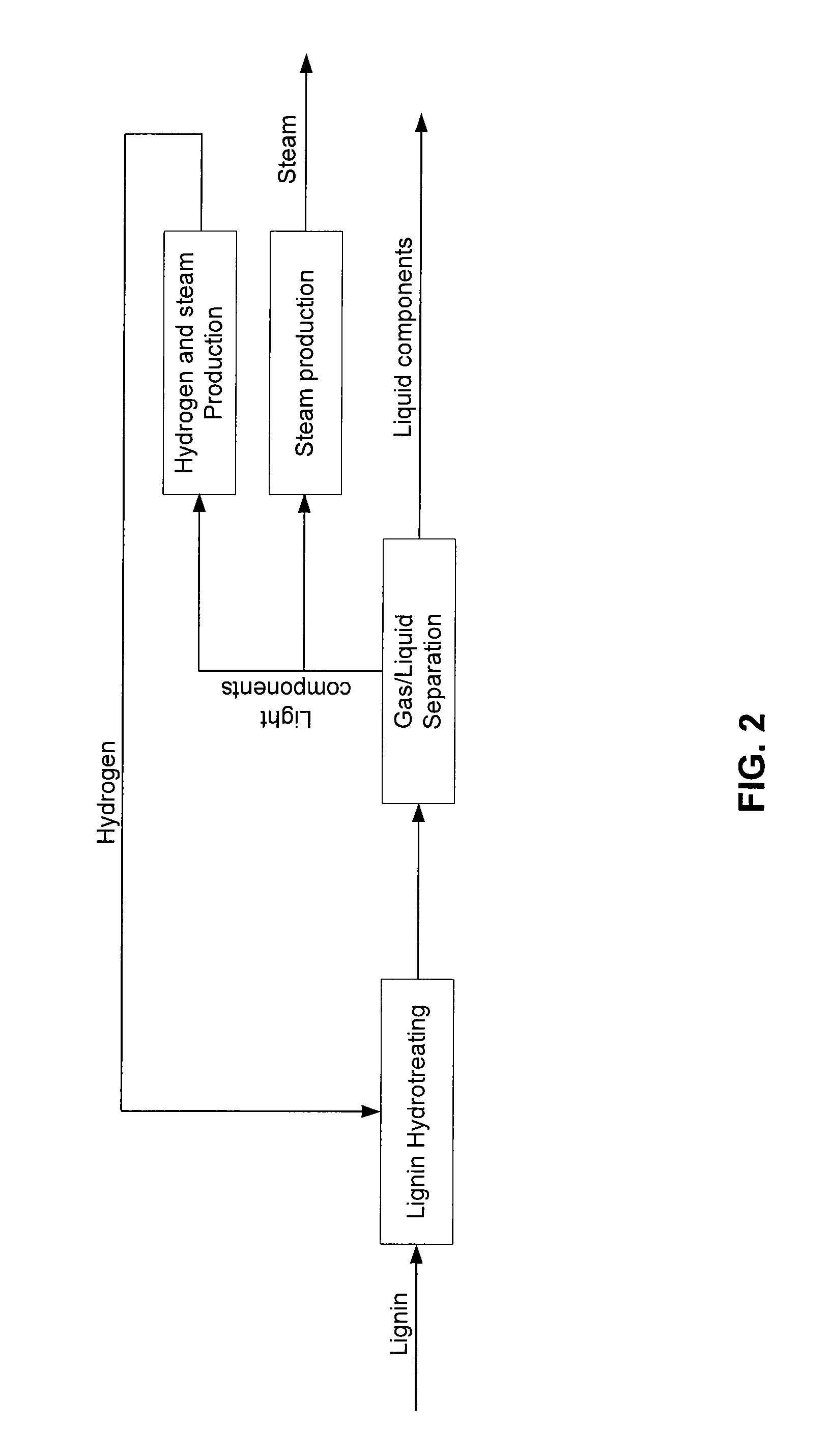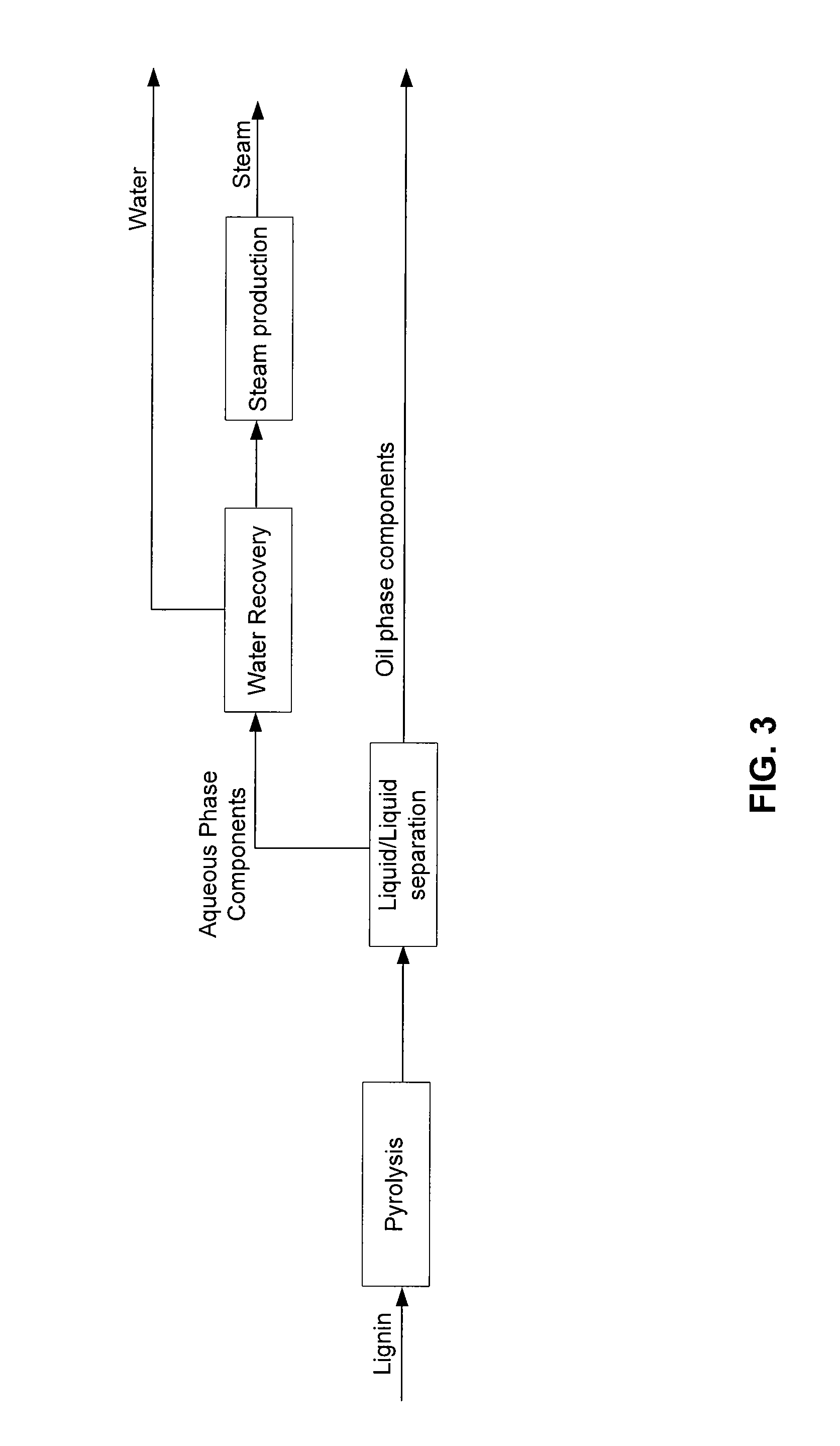Production Of Pure Lignin From Lignocellulosic Biomass
a technology of lignin and biomass, which is applied in the direction of lignin derivatives, waste based fuels, biofuels, etc., can solve the problems of large chemical costs, lignin use, and subject to delignification technologies
- Summary
- Abstract
- Description
- Claims
- Application Information
AI Technical Summary
Benefits of technology
Problems solved by technology
Method used
Image
Examples
example 1
Preparation of High-Purity Lignin Using Exogenous Enzymes
[0082]A biomass sample (1a) was prepared from mixed hardwood chips using a continuous pretreatment reactor with post-refining. Residence time in the reactor was 10 minutes and operating temperature was 195° C. The pretreatment used steam only; no acid or base was added to control pH.
[0083]The resulting pretreated material had composition (dry solids basis) as follows:
Sample% Glucan + Xylan% Lignin% Ash1a63.0nd*nd**No data available.
[0084]Following pretreatment the samples were washed to remove soluble solids. 2500 g (wet weight) of sample (50% total solids) was pressed into a 150 mm Buchner funnel containing Whatman Sharkskin filter paper. The sample was washed under vacuum with 3750 mL deionized water at 50° C. Sample was pressed by hand until all liquid was removed and the sample was then air-dried at room temperature back to the original 50% total solids content.
[0085]Following washing the samples were hydrolyzed for 120 ho...
example 2
Preparation of High-Purity Lignin Using Exogenous Enzymes and SSCF
[0088]A biomass sample (2a) was prepared from white birch chips using a continuous pretreatment reactor with post-refining. Residence time in the reactor was 10 minutes and operating temperature was 195° C. The pretreatment used steam only; no acid or base was added to control pH.
[0089]The resulting pretreated material (2a) had composition (dry solids basis) as follows:
Sample% Glucan + Xylan% Lignin% Ash2a59.713.9nd**No data available
[0090]Following pretreatment, the sample was washed to remove soluble solids. 800 g (wet weight) of 2a (45% solids) was pressed into a 150 mm Buchner funnel containing Whatman Sharkskin filter paper. The sample was washed under vacuum with 350 ml deionized water at 25° C. Sample was pressed by hand until all liquid was removed and the sample was then air-dried at room temperature overnight.
[0091]Following washing the sample was prepared for Simultaneous Saccharification and Co-Fermentatio...
example 3
Production of High-Purity Lignin Using Two Stage Biotreatment
[0099]Post fermentation, lignin-rich solids were separated from the liquid fraction after a fermentation reaction. The material was treated with liquid hot water at 30% dry solids loading (300 g dry solids / L liquid) at 200° C. for 10 min (plus 5 min heat-up time). The treatment conditions applied are the optimum pretreatment conditions for poplar hydrolysis. Liquid hot water treatment was carried out using a 1″ OD and 4.5″ length stainless steel tube reactor. The tube containing the slurry was placed in a fluidized sand bath which was set to 200° C. as described in U.S. Pat. No. 5,846,787.
[0100]The liquid hot water treated slurry was hydrolyzed at either 5% or 30% dry solids loading. For 5% dry solids hydrolysis pH 4.8 citrate buffer was added to the treated slurry to dilute it to 5% dry solids. Enzyme loading for the secondary hydrolysis was 15 FPU Spezyme CP and 40 IU Novo199 per gram of glucan. Hydrolysis was carried ou...
PUM
| Property | Measurement | Unit |
|---|---|---|
| Temperature | aaaaa | aaaaa |
| Temperature | aaaaa | aaaaa |
| Fraction | aaaaa | aaaaa |
Abstract
Description
Claims
Application Information
 Login to View More
Login to View More - R&D
- Intellectual Property
- Life Sciences
- Materials
- Tech Scout
- Unparalleled Data Quality
- Higher Quality Content
- 60% Fewer Hallucinations
Browse by: Latest US Patents, China's latest patents, Technical Efficacy Thesaurus, Application Domain, Technology Topic, Popular Technical Reports.
© 2025 PatSnap. All rights reserved.Legal|Privacy policy|Modern Slavery Act Transparency Statement|Sitemap|About US| Contact US: help@patsnap.com



